
Ruth Gordon Jones was an American actress, screenwriter, and playwright. She began her career performing on Broadway at age 19. Known for her nasal voice and distinctive personality, Gordon gained international recognition and critical acclaim for film roles that continued into her 70s and 80s. Her later work included performances in Rosemary's Baby (1968), What Ever Happened to Aunt Alice? (1969), Where's Poppa? (1970), Harold and Maude (1971), Every Which Way But Loose (1978), Any Which Way You Can (1980), and My Bodyguard (1980).

Katharine Houghton Hepburn was an American actress whose career as a Hollywood leading lady spanned six decades. She was known for her headstrong independence, spirited personality, and outspokenness, cultivating a screen persona that matched this public image, and regularly playing strong-willed, sophisticated women. She worked in a varied range of genres, from screwball comedy to literary drama, and earned her various accolades, including four Academy Awards for Best Actress—a record for any performer. In 1999, Hepburn was named the greatest female star of classic Hollywood cinema by the American Film Institute.

Spencer Bonaventure Tracy was an American actor. He was known for his natural performing style and versatility. One of the major stars of Hollywood's Golden Age, Tracy was the first actor to win two consecutive Academy Awards for Best Actor, from nine nominations. During his career, he appeared in 75 films and developed a reputation among his peers as one of the screen's greatest actors. In 1999, the American Film Institute ranked Tracy as the 9th greatest male star of Classic Hollywood Cinema.
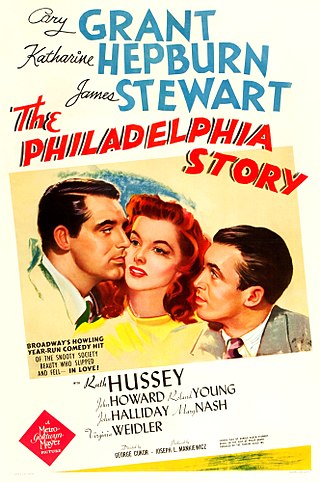
The Philadelphia Story is a 1940 American romantic comedy film starring Cary Grant, Katharine Hepburn, James Stewart and Ruth Hussey. Directed by George Cukor, the film is based on the 1939 Broadway play of the same name by Philip Barry about a socialite whose wedding plans are complicated by the simultaneous arrival of her ex-husband and a tabloid magazine journalist. The socialite, played by Hepburn in both productions, was inspired by Helen Hope Montgomery Scott (1904–1995), a Philadelphia heiress who had married Barry's friend.

The African Queen is a 1951 adventure film adapted from the 1935 novel of the same name by C. S. Forester. The film was directed by John Huston and produced by Sam Spiegel and John Woolf. The screenplay was adapted by James Agee, John Huston, John Collier and Peter Viertel. It was photographed in Technicolor by Jack Cardiff and has a music score by Allan Gray. The film stars Humphrey Bogart and Katharine Hepburn with Robert Morley, Peter Bull, Walter Gotell, Richard Marner and Theodore Bikel.

Adam's Rib is a 1949 American romantic comedy-drama film directed by George Cukor from a screenplay written by Ruth Gordon and Garson Kanin. It stars Spencer Tracy and Katharine Hepburn as married lawyers who come to oppose each other in court. Judy Holliday co-stars as the third lead in her second credited movie role. Also featured are Tom Ewell, David Wayne, and Jean Hagen. The music was composed by Miklós Rózsa, and the song "Farewell, Amanda" was written by Cole Porter.

Guess Who's Coming to Dinner is a 1967 American romantic comedy-drama film produced and directed by Stanley Kramer, and written by William Rose. It stars Spencer Tracy, Sidney Poitier, and Katharine Hepburn, and features Hepburn's niece Katharine Houghton.

Father of the Bride is a 1950 American romantic comedy film directed by Vincente Minnelli from a screenplay by Frances Goodrich and Albert Hackett, based on the 1949 novel of the same name by Edward Streeter. The film stars Spencer Tracy, Joan Bennett, and Elizabeth Taylor, and follows a man trying to cope with preparations for his daughter's wedding. Father of the Bride was nominated for Academy Awards for Best Picture, Best Writing, Screenplay, and Best Actor in a Leading Role.
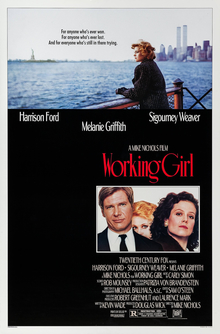
Working Girl is a 1988 American romantic comedy-drama film directed by Mike Nichols, written by Kevin Wade, and starring Harrison Ford, Sigourney Weaver, and Melanie Griffith. Its plot follows an ambitious secretary from Staten Island who takes over her new boss's role while the boss is laid up with a broken leg. The secretary, who has been going to business night school, pitches a profitable idea, only to have the boss attempt to take credit.
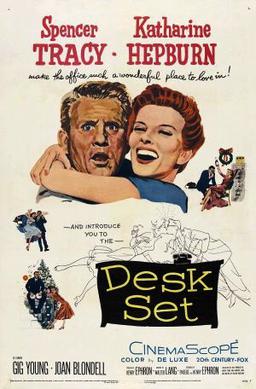
Desk Set is a 1957 American romantic comedy film directed by Walter Lang and starring Spencer Tracy and Katharine Hepburn. The screenplay was written by Phoebe Ephron and Henry Ephron from the 1955 play of the same name by William Marchant.

Joseph Leo Mankiewicz was an American film director, screenwriter, and producer. Mankiewicz had a long Hollywood career, and won both the Academy Award for Best Director and the Academy Award for Best Adapted Screenplay in consecutive years for A Letter to Three Wives (1949) and All About Eve (1950), the latter of which was nominated for 14 Academy Awards and won six.

Garson Kanin was an American writer and director of plays and films.

Pat and Mike is a 1952 American romantic comedy film starring Spencer Tracy and Katharine Hepburn. The movie was written by Ruth Gordon and Garson Kanin, and directed by George Cukor. Cukor directed The Philadelphia Story (1940) with Hepburn, and Cukor, Gordon and Kanin teamed with Hepburn and Tracy again for Adam's Rib (1949). Gordon and Kanin were nominated for the 1952 Academy Award for Best Original Screenplay for their work on Pat and Mike.

Keeper of the Flame is a 1942 American drama film directed by George Cukor, and starring Spencer Tracy and Katharine Hepburn, released by Metro-Goldwyn-Mayer (MGM). The screenplay by Donald Ogden Stewart is adapted from the 1942 novel Keeper of the Flame by I. A. R. Wylie. Hepburn plays the widow of a famous civic leader who has died in an accident. Tracy portrays a former war correspondent who intends to write a flattering biography of the dead man, only to find that his death is shrouded in mystery. Screenwriter Stewart considered the script the finest moment of his career, feeling vindicated by the assignment as he believed that Hollywood had punished him for years for his political views. Principal filming began in the last week of August 1942, four months after the release of the novel, published by Random House. The picture was filmed on a sound stage, with no location shooting. Hepburn had already begun a relationship with Tracy, and his heavy drinking led her to become his vigilant guardian during the filming.
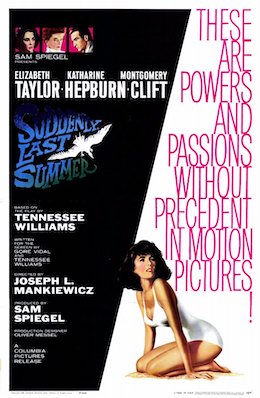
Suddenly, Last Summer is a 1959 Southern Gothic mystery film based on the 1958 play of the same name by Tennessee Williams. The film was shot in England, Spain and the Balearic Islands. It was directed by Joseph L. Mankiewicz and produced by Sam Spiegel from a screenplay by Gore Vidal and Williams with cinematography by Jack Hildyard and production design by Oliver Messel. The musical score was composed by Buxton Orr, using themes by Malcolm Arnold.

Woman of the Year is a musical with a book by Peter Stone and score by John Kander and Fred Ebb.

Fay Kanin was an American screenwriter, playwright and producer. Kanin was president of the Academy of Motion Picture Arts and Sciences from 1979 to 1983.
Michael Kanin was an American director, producer, playwright and screenwriter who shared an Academy Award with Ring Lardner Jr. for writing the Katharine Hepburn-Spencer Tracy film comedy Woman of the Year (1942).
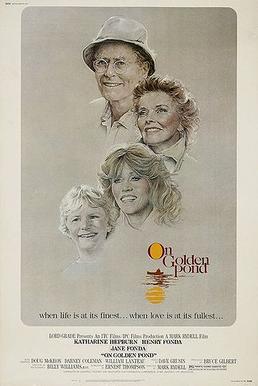
On Golden Pond is a 1981 family drama directed by Mark Rydell from a screenplay written by Ernest Thompson, adapted from his 1979 play of the same name. It stars Katharine Hepburn, Henry Fonda, Jane Fonda, Doug McKeon, Dabney Coleman and William Lanteau. In the film, Norman, a crusty, retired professor grappling with many effects of aging, is estranged from his daughter, Chelsea. At their summer home on Golden Pond, Norman and his wife Ethel agree to care for Billy, the son of Chelsea's new boyfriend, and an unexpected relationship blooms.
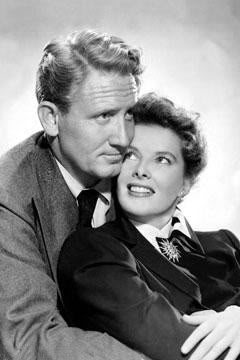
Katharine Hepburn (1907–2003) and Spencer Tracy (1900–1967) were a legendary cinematic couple, both on- and off-screen. Hepburn and Tracy starred in nine films together, and had an affair—an open secret in Hollywood—that lasted 26 years, ending only with Tracy's death.






















